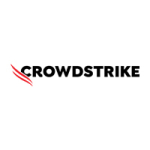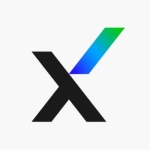We use Trend Vision One for the XDR and we absolutely love it, especially the full visibility into protected assets. It's incredibly easy to identify weaknesses across systems and manage any outdated software or areas needing attention directly within the user interface. Previously, we juggled multiple dashboards, but the new version has streamlined everything into a single, unified dashboard. This has significantly simplified our workflow and improved manageability. In essence, we can now manage multiple products seamlessly within the same Vision dashboard, which is a considerable improvement over the previous system. This year has brought significant and positive changes to our workflow.
We use XDR across Office 365 in the cloud and on-premises environments to safeguard our assets. This includes protecting our server environment, workstations, and Virtual Desktop Infrastructure, ensuring comprehensive endpoint security.
Our deployment utilizes a hybrid model, making agent deployment incredibly simple. We employ several different deployment methods: on-premise deployment through Active Directory and utilizing various tools. In case a system leaves the network for any reason, we have third-party solutions in place. We have multiple RMM solutions that can be rapidly deployed in these packages. For example, I've recently observed systems being spun up and sent home before antivirus protection was activated. We still have the opportunity to deploy these solutions in the cloud automatically. So, we have a few ways to work around this and deploy those agents, making it easy to deploy either on-premise or in the cloud. We can address several scenarios and push out to those endpoints.
Coverage is extremely important. We want to ensure visibility into all assets across the network, whether it's a workstation within the office or someone working remotely. This visibility is crucial even when they're outside the network or using cloud-based software, especially since we have no on-premise infrastructure. With the rise of remote work, having this extra visibility into devices, whether at home or abroad, is invaluable. We appreciate the ability to see what's happening on any asset, regardless of its location. This allows us to monitor running processes, identify vulnerabilities, and push necessary updates, ensuring we maintain connectivity and security no matter where devices are operating.
Trend Vision One offers us comprehensive visibility within a single dashboard, which is crucial since we manage numerous other products and security solutions with various dashboards. The simplicity and centralized visibility provided by Trend Vision One significantly streamline our operations. Managing a multitude of security products across our environment necessitates consolidated visibility to minimize back-and-forth navigation. Having all the necessary information in one place is essential for us.
We use executive dashboards to generate weekly or monthly reports that provide a risk score index. This index helps us identify areas needing attention and understand the teams' focus. We then share this information with IT senior management. In addition to our reporting, we receive a monthly report that allows us to compare our current status to the previous month's and highlight new challenges, team weaknesses, and ongoing efforts. This comprehensive view enables the executive team to monitor the team's continuous progress.
We utilize the risk index feature to monitor and mitigate potential environmental risks. One example of this is how we proactively worked to reduce the risk index score of a recently acquired company. Their antivirus product was expiring, so we opted to purchase additional licenses for our existing Trend Apex One product suite instead of renewing it. However, this integration significantly increased the risk index score due to numerous previously unmanaged devices on their network. To address this, we systematically worked through the risk index list, identifying outdated software and determining if it was still in use or could be safely removed. By leveraging the risk index in this way, we successfully lowered the score and ensured the secure integration of the newly acquired company into our environment.
It took some time to fine-tune Trend Vision One before realizing its benefits. A significant concern was integrating it into our virtual environment, a complex process. However, we gained significant visibility once set up in our VDI, leading to further adjustments. We fine-tuned the environment, removing unnecessary elements, which is especially crucial for our non-persistent VDI, where VMs reset if anything goes down. Through these tweaks, performance improved, and the extra visibility provided by Vision One highlighted areas needing attention, allowing us to optimize the environment gradually.
We use Trend Vision One within Azure, expanding its monitoring capabilities to both on-premises and cloud assets, including Active Directory, which is synchronized from our on-premises environment. This hybrid setup covers assets locally and in the cloud, including Office 365, and Trend Vision One effectively manages security across this environment. It has simplified the process, particularly for virtual environments, providing enhanced visibility and flexibility compared to previous products. The additional visibility has been invaluable, enabling us to address previously undetected vulnerabilities and mitigate risks.
During XDR and managed services pen testing exercises, we identified some weaknesses. They were able to automatically crack some accounts. As soon as one system was breached, the managed services team contacted us, escalating until they got a response. We could see their process in action - their steps and what they did in the backend. We provided them with details about the events and the ongoing pen test. It was an excellent test to see that the managed services worked as intended. There was a breach; they asked if we were aware and stated they would isolate the device if we weren't. We acknowledged we knew about the ongoing pen test. Throughout these exercises, they reached out immediately, demonstrating their focus on alerts, their process for triaging them, and their communication with clients.
The attack surface is directly related to exposure and risk. Any identified vulnerabilities, such as outdated software like older versions of Office or Google Chrome products, are flagged immediately. We use third-party solutions to address these issues across all workstations. Whenever we detect internal or internet-facing exposure, we prioritize remediation based on criticality. External-facing vulnerabilities are patched first, as they pose a greater risk than those affecting only internal assets. We rely heavily on exposure risk and risk index to determine priority and ensure the most critical vulnerabilities are addressed first. This helps us identify blind spots in our environment. Take the new acquisition as an example; many devices were unprotected and lacked crucial Windows updates. Numerous products and workstations required immediate attention. Security wasn't the initial priority, so we addressed that and ensured it became one. We implemented numerous changes with acquisitions to align them with our security standards.
Trend Vision One has significantly reduced our mean time to detect and respond to threats by 60 percent. It centralizes all information, enabling us to identify and address vulnerabilities quickly. For example, if we discover multiple devices running an outdated version of Office 2013 missing patches, we can easily compile a list of those devices and share it with the responsible team for remediation. This visibility allows us to proactively address weaknesses across the network, such as deploying updates or the latest release of third-party software to mitigate risks. Trend Vision One has been instrumental in enhancing our overall security posture.
The managed services significantly reduced the time we spent investigating false positive alerts. In uncertain scenarios, we consult the managed services team. If unsure about anything, we use the AI companion for questions. If we encounter an unfamiliar flag or event, we research it independently and involve the managed services team's professionals for deeper investigation.
We have implemented some automation but haven't fully explored its capabilities. We have a few playbooks for tasks like blocking user access based on IP addresses or email content. Since we use Office 365 in the cloud, there's also a lot of automation for handling incoming emails, such as blocking and sending alerts. While we've used playbooks to a limited extent, there's potential for further automation, and we plan to explore this further.
The most significant recent change has been the addition of the new AI companion. This feature has proven invaluable, especially when integrating with third-party products or resetting the dashboard, as it provides detailed step-by-step guidance. In fact, we were able to resolve all issues independently, without needing to contact support, thanks to the AI companion's comprehensive answers.
The only downside to Trend Vision One is its complexity. It's a comprehensive product covering a lot of ground, which can be a little intimidating initially. The user interface, in particular, can take some time to get used to, with menus that could be better organized and a dashboard that could be more user-friendly. Due to the sheer complexity of the product, navigating and familiarizing oneself with the environment requires some effort. While the initial learning curve might be steep, the product's vast capabilities justify the time investment.
I have been using Trend Vision One for two and a half years.
I would rate the stability of Trend Vision One nine out of ten. I haven't experienced any crashes or issues in the last few years since we started using the product. While there are occasional upgrades and minor changes that require adjustments, the overall stability is excellent. We have no complaints, especially considering the VDI environment, our primary focus, has been running seamlessly. The lightweight agent minimizes resource usage, further contributing to smooth performance.
I would rate the scalability of Trend Vision One nine out of ten. We successfully scaled it up by adding approximately 250 workstations and deployed the product within a week. We replaced their previous product, scripted everything, integrated it into their on-premise servers, and deployed the agents. The 250 additional assets were integrated within two or three days, providing complete visibility in the dashboard. The team then took over and identified any weaknesses. In summary, scaling up and adding 250 workstations was easy to implement.
The technical support and service are excellent. After our new acquisition, we encountered a few issues that we hadn't seen in our environment compared to theirs. Through troubleshooting, we determined that the problems weren't caused by the product itself but rather by corruption in specific systems. We systematically worked through the other products, disabling them one by one. The troubleshooting experience was excellent, and we reached a resolution within a couple of days of contacting support. They were very professional and provided direct answers, resulting in the issues being resolved correctly and in a timely manner.
In the past, we have used a few different products, including Sophos and Cylance, which we have used for the past couple of years. We also used Trend's older products, like OfficeScan, about eight or nine years ago. We eventually moved away from those products due to their lack of AI capabilities. After trying other products, we returned to Trend with Apex One and Vision One. We've been happy with the product, and its virtual environment capabilities were a major factor for us. Trend has consistently been the best performing product for us, so we decided to continue using their products with Trend Vision One.
The initial deployment was straightforward. We leveraged our existing products to force and uninstall the previous product, opting for a custom scripting approach rather than standard GPOs or internal solutions. This allowed us to uninstall the old package and ensure the new installation was reflected in the dashboard, streamlining the process and enabling us to proceed seamlessly to the next phase. Overall, the deployment was straightforward from our perspective.
We deployed Trend Vision One during COVID, which took approximately one and a half weeks because the server side required additional fine-tuning for all the exclusions.
We implemented the solution in-house. We repeatedly reached out to obtain basic information and guidelines on the VDI component and the virtual environment, specifically regarding steps for managing the virtual environment when closing a gold image and imaging numerous workstations with a single image. Due to the complexities involved, we requested documentation. However, our internal team completed the entire deployment with limited support from their support team, following the provided instructions.
The pricing is fair compared to other solutions. It's within the price range we're looking at for a single endpoint, and fair pricing is important to us.
I would rate Trend Vision One nine out of ten.
The Trend Vision team handles all maintenance on the SaaS backend. Internally, we only need to update the VDI environment occasionally because it's a non-persistent VDI, meaning it's locked down and reverts to its previous state upon reboot. We periodically open the gold images to perform maintenance, update signatures, and force program upgrades, but this is only a monthly task. So, we spend minimal time managing the solution.
Before implementing Trend Vision One, ensure you gather comprehensive documentation. Adhering to the guidelines will streamline setup, and any queries can be resolved using the efficient AI companion. Users can pose questions or access documentation directly from the Trend website. Initially, focus on familiarizing yourself with the dashboard, risk indexing, and the executive dashboard. Explore the product, ask questions, and continue experimenting and seeking assistance once deployed. The process is straightforward once you've had the opportunity to explore the system thoroughly. The primary challenge is becoming comfortable with the interface and navigating its features effectively.






















